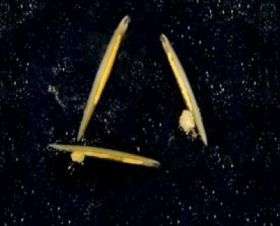Worm-like marine animal providing

The marine invertebrate amphioxus offers baseline information for genetic roots of vertebrate innovation such as the adaptive immune system
Research on the genome of a marine creature led by scientists at Scripps Institution of Oceanography at UC San Diego is shedding new light on a key area of the tree of life.
Linda Holland, a research biologist at Scripps Oceanography, and her colleagues from the United States, Europe and Asia, have deciphered and analyzed fundamental elements of the genetic makeup of a small, worm-like marine animal called amphioxus, also known as a lancelet.
Amphioxus is not widely known to the general public, but is gaining interest in scientific circles because of its position as one of the closest living invertebrate relatives of vertebrates. Although amphioxus split from vertebrates more than 520 million years ago, its genome holds tantalizing clues about evolution.
The research led by Holland is published in the July issue of the journal Genome Research. A corresponding research paper is published in the June 19 issue of Nature.
Holland and her colleagues studied the genes of the amphioxus species Branchiostoma floridae through samples obtained in recent years during field work off Tampa, Fla.
Because amphioxus is evolving slowly—its body plan remains similar to that of fossils from the Cambrian time—the animal serves as an intriguing comparison point for tracing how vertebrates have evolved and adapted. This includes new information about how vertebrates have employed old genes for new functions.
"We are finding that today's complicated vertebrate has not invented a lot of new genes to become complicated," said Holland, of the Marine Biology Research Division at Scripps Oceanography. "Amphioxus shows us that vertebrates have taken old genes and recombined them, changed their regulation and perhaps changed the gene function."
Originally discovered in the 1700s, amphioxus appears fish-like with a small tail fin and medial fins, but no paired ones. They spend most of their time burrowed in sand, with their snouts extended for filter feeding.
The human genome has only about 25 percent more genes than the amphioxus genome, according to Holland. During evolution, humans have duplicated genes for different functions. Such duplication has given humans and other vertebrates a much larger "toolkit" for making various structures that are absent in amphioxus, including cells for pigment and collagen type II-based cartilage, for example.
In the new research, Holland and her colleagues describe success in probing the roots of important functions such as immunity. While vertebrates have two types of immune systems—innate, which is a general first line of defense against pathogens, and adaptive, involving antibodies specific for particular pathogens—invertebrates like amphioxus have only innate immune systems. In amphioxus, several of these innate immune genes have been independently duplicated many times over. It may be that with a second line of defense, vertebrates, compared with invertebrates like amphioxus, are less reliant on innate immunity to ward off infection.
The neural crest cells of vertebrates are an excellent example of how "old" genes have acquired new functions. In all vertebrates, neural crest cells migrate from the developing neural tube throughout the body, giving rise to such structures as pigment cells, cartilage of the head and a number of other cell types. Although amphioxus has a brain and spinal cord and makes them using the same genes in the same way as vertebrates, amphioxus has no neural crest cells. Even so, amphioxus has all of the genes necessary for generating migratory neural crest cells; vertebrates have just put them together in new ways. It can be compared with a chef who takes basic leftovers in a refrigerator and whips up a fine gourmet dish.
"The take-home message from this sequencing is that the human and amphioxus genomes are very much alike," said Holland.
A collaborative effort of some 30 laboratories around the world solved the sequence of the amphioxus genome.
Further, deeper analyses between the amphioxus and human genomes in the years ahead will provide even more important clues about genetic evolution.
"All of this is just the tip of the iceberg," said Holland. "It will take a number of years for people to look in greater depth at the amphioxus and human genomes. In terms of figuring out what evolution has done and how it generally works, the amphioxus genome has really been a goldmine and will continue to be one in the years ahead."
Source: University of California - San Diego




















